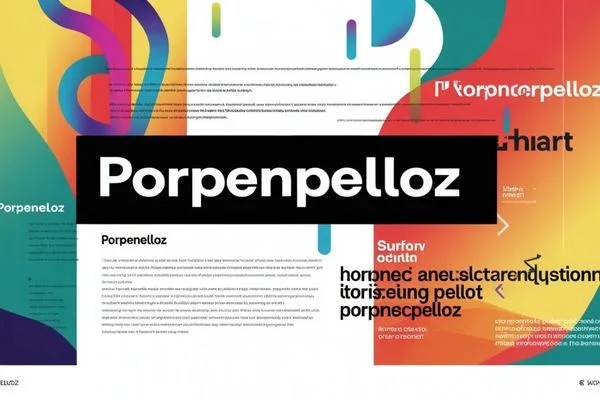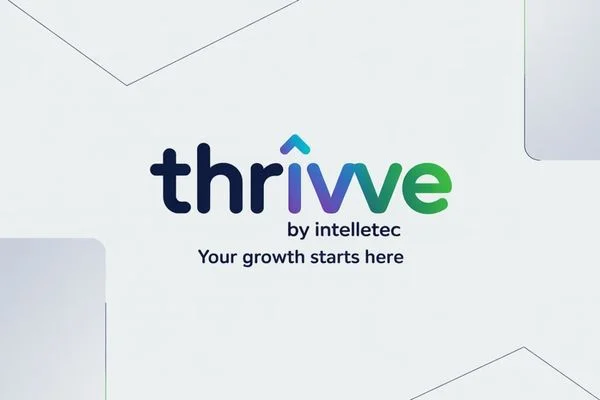Introduction
You’re browsing online and encounter a term that stops you mid-scroll: “Porpenpelloz.” A quick search reveals scattered mentions across various platforms, but no definitive explanation. This isn’t accidental confusion—it’s deliberate innovation.
In today’s hyper-documented digital world where Wikipedia explains everything and Google answers instantly, porpenpelloz represents something different. It’s an adaptable concept that serves multiple purposes across industries. For entrepreneurs seeking memorable branding, developers designing responsive platforms, or creators exploring new artistic territories, this framework offers unexpected possibilities.
Understanding the Core Concept
Porpenpelloz functions as an interpretive framework rather than a fixed definition. This flexibility allows different sectors to mold it according to their specific requirements.
Industry Applications:
Technology professionals view it as methodology for creating intelligent, adaptive software that learns user preferences and adjusts automatically. Marketing specialists recognize it as strategic branding territory—a term available across digital platforms without the burden of existing associations.
Creative professionals embrace it as liberation from traditional categorical restrictions. It questions why work must fit into predetermined boxes when it could create entirely new spaces between established disciplines.
This adaptability isn’t vague—it’s strategic. While competitors squeeze into overcrowded categories, porpenpelloz enables creating unique positioning.
Three Primary Applications
Strategic Branding Approach
Consider the modern entrepreneur’s challenge: launching with a distinctive identity. Quality names vanish quickly, forcing choices between awkward combinations or expensive acquisitions.
Digital Territory Comparison:
| Element | Standard Options | Porpenpelloz Advantage |
| Domain Names | Heavily saturated | Open availability |
| Social Platforms | Username conflicts | Consistent handles |
| Brand Recognition | Generic blending | Distinctive recall |
| Market Position | Category competition | Unique space creation |
Memory research confirms unusual terms stick better than common phrases. When someone encounters “porpenpelloz” once, cognitive patterns ensure retention. This contrasts sharply with forgettable generic names that disappear into background noise.
The consistency factor matters significantly. Unified branding across every touchpoint—from web presence to physical materials—becomes straightforward when platform conflicts don’t exist.
Practical Implementation:
- Launch identities for emerging ventures
- Product designation requiring memorability
- Creative agency positioning
- Individual brand development
- Event series establishing recognition
Technology Framework Design
Software traditionally operates mechanically—input A produces output B consistently. Porpenpelloz-inspired platforms function differently, observing user behavior patterns and adapting responses accordingly.
Framework Characteristics:
- Learning Capability – Systems recognize patterns without manual programming
- Context Awareness – Platforms understand situational factors and respond appropriately
- Distributed Operation – Architecture that processes locally rather than centrally
- Ongoing Improvement – Software evolves through use, not just updates
- Human-Centered Focus – Technology conforming to people, reversing traditional dynamics
Consider practical application: A task management tool built on these principles observes your Monday morning routine of reviewing communications and planning. By Wednesday afternoon, when focus fragments across multiple projects, it simplifies its interface automatically. Friday evening brings wrap-up mode without manual switching.
System Comparison:
| Conventional Approach | Porpenpelloz Method |
| Predetermined rules | Pattern recognition |
| Static interfaces | Dynamic adaptation |
| Central processing | Distributed intelligence |
| User configuration | Automatic personalization |
| Universal design | Individual customization |
Developers actively build platforms using these concepts, creating vocabulary and methodology for discussing adaptive software architecture.
Creative Methodology
Traditional creative sectors enforce strict categorization. Porpenpelloz philosophy rejects these artificial boundaries.
This approach doesn’t merely combine existing disciplines—it operates where traditional categories dissolve completely. The result isn’t “visual art with text elements” or “illustrated narrative.” It becomes something genuinely new, resisting conventional description.
Observed Applications:
- Visual installations responding to environmental sound
- Narratives that transform based on reader interaction pace
- Music incorporating algorithmic composition from artist patterns
- Participatory experiences where audiences become co-creators
These don’t fit standard exhibition formats. They establish their own categories.
Guiding Principles:
Collaborative Creation: Moving beyond competitive models toward recognizing that innovation happens at disciplinary intersections. Data analysts partnering with poets produce work neither could generate independently.
Evolution Focus: Traditional creative work targets completion. Porpenpelloz expects continuous development. Version one initiates rather than concludes. Audience contributions, temporal changes, and contextual shifts shape ongoing evolution.
Interpretation Space: Like the term itself, creative work deliberately provides room for personal interpretation. It establishes frameworks each viewer completes individually rather than delivering singular messages.
Real-World Implementation
Business Development
A collaboration software startup struggled with naming. Available options felt generic or awkward. They used “porpenpelloz” internally during development. When media coverage began, journalists questioned the unusual choice. The founder’s explanation about adaptive, boundary-breaking philosophy generated organic publicity. The temporary codename became permanent branding.
Application Areas:
- Venture naming in saturated markets
- Product designation requiring distinction
- Project identifiers that may become permanent
- Brand positioning emphasizing innovation
Software Architecture
Developers create porpenpelloz-style platforms across domains:
Productivity Systems:
- Task management learning work patterns for automatic prioritization
- Note applications surfacing contextually relevant information
- Scheduling tools suggesting optimal timing based on energy patterns
Creative Applications:
- Design tools with AI learning style preferences
- Writing platforms adapting features to project types
- Production software suggesting elements matching workflow
Communication Infrastructure:
- Messaging systems adjusting notification priorities by availability patterns
- Email interfaces learning which messages need immediate attention
- Conferencing platforms optimizing quality based on connection patterns
Creative Practice
Artists and designers employ porpenpelloz philosophically and strategically. “The Porpenpelloz Collective” signals experiencing something beyond categorization. Musicians releasing genre-blending work, artists creating hybrid pieces, writers producing experimental narratives use it indicating deliberate boundary rejection.
Creative communities form around this philosophy, producing work existing at traditional discipline intersections.
Personal Systems
Individuals develop custom frameworks blending different methodologies:
| Component | Traditional Method | Adapted Approach |
| Task Management | GTD or Kanban | Hybrid switching by project type |
| Information Capture | Zettelkasten or Cornell | Dynamic structure adapting to content |
| Time Allocation | Pomodoro or Time Blocking | Flexible system adjusting to energy |
| Objective Setting | SMART or OKRs | Evolving targets shifting with circumstances |
The distinction? These aren’t rigid frameworks demanding conformity. They’re adaptive systems bending to actual working styles.
Urban Infrastructure
City planners explore porpenpelloz concepts for municipal systems:
- Traffic management learning peak patterns for automatic timing adjustment
- Public transit rerouting based on demand rather than fixed scheduling
- Community facilities adapting to actual usage patterns
- Energy distribution based on predicted needs versus fixed allocation
The pattern? Shifting from rigid hierarchical systems toward adaptive, responsive infrastructure learning from actual users.
Implementation Guide
Select Application Point
Choose one specific area where conventional approaches create limitations.
Starting Points:
- New projects requiring naming
- Systems or processes feeling restrictive
- Creative work defying existing categories
- Products benefiting from adaptability
Define Personal Interpretation
No official definition exists. Your version serves your context.
Key Questions:
- What specific problem needs solving?
- How does this approach differ from existing solutions?
- Which principles matter most? (Adaptability? Boundary-breaking? Distinctiveness?)
- How will success be measured?
Document responses. This becomes your operational framework.
Establish Structure
Even flexible concepts need organizational principles.
For Branding:
- Visual identity elements
- Communication tone guidelines
- Explanation approach for others
- Cross-platform consistency rules
For Technology:
- Core technical principles
- Adaptation triggers and boundaries
- Privacy and ethical considerations
- Performance measurement
For Creative Work:
- Boundaries being challenged and those being maintained
- Collaboration guidelines
- Evolution and versioning methodology
- Audience presentation approach
Test and Refine
Launch on limited scale first.
Evaluation Points:
- ✓ Problem resolution effectiveness
- ✓ Understanding or intrigue generation
- ✓ Flexibility/distinctiveness delivery
- ✓ Unexpected challenge emergence
- ✓ Performance versus traditional methods
Build Learning Systems
Adaptation requires continuous feedback.
Mechanisms:
- User testing and direct feedback
- Usage analytics and behavioral data
- Team reflection sessions
- Community input channels
- Personal observation and intuition
Modify interpretation based on learning. The goal involves evolution, not rigid adherence to initial concepts.
Scale Deliberately
After validation, expand thoughtfully.
Considerations:
- Core principle maintenance during growth
- Training others in your interpretation
- Documentation without rigidity
- Knowing when persistence versus pivoting makes sense
Psychological Foundations
The Knowledge Gap Effect
Human brains resist incomplete information. Encountering unfamiliar terms creates psychological gaps demanding closure. This mechanism drives curiosity more powerfully than straightforward terminology.
Porpenpelloz intentionally creates this gap. Initial unfamiliarity triggers curiosity mode, driving engagement through natural cognitive processes.
Autonomy and Ownership
Expert advice constantly prescribes “correct” methodologies. Porpenpelloz reverses this by inviting personal definition.
This empowerment provides:
- Enhanced control and autonomy
- Stronger personal investment
- Reduced friction from predetermined frameworks
- Increased creativity through experimental permission
Digital Linguistic Innovation
Digital culture continuously invents terminology describing emerging behaviors faster than traditional language evolution. New words serve important functions:
- Creating community identity through shared vocabulary
- Crystallizing complex ideas into memorable packages
- Providing discussion framework for new phenomena
- Signaling cultural shifts and evolving thinking
Porpenpelloz taps this linguistic energy while providing interpretive flexibility different communities can claim individually.
Social Validation
When multiple sources reference unfamiliar concepts, social proof suggests value. Seeing porpenpelloz across diverse contexts—technology discussions, creative communities, business content—implies substance despite definitional openness.
Critical Considerations
Communication Clarity
Challenge: Explaining your porpenpelloz interpretation to clients, investors, or collaborators may generate confusion rather than engagement.
Ambiguity creates barriers when quick comprehension matters—client presentations, investor pitches, team onboarding, mainstream marketing, time-constrained situations.
Solution: Maintain both “porpenpelloz explanation” and “plain language explanation.” Know which context demands which approach.
Precision Requirements
Certain situations require absolute clarity where interpretive flexibility becomes liability.
Critical Clarity Contexts:
| Situation | Reason | Risk |
| Legal Documentation | Contracts need precision | Disputes, void agreements |
| Medical Protocols | Patient safety requires clarity | Potential harm |
| Technical Specifications | Engineering needs exact parameters | System failures |
| Regulated Industries | Compliance demands specific language | Penalties, closures |
| Safety Procedures | Lives depend on clear direction | Accidents, liability |
Using porpenpelloz concepts without clear definitions in these contexts isn’t innovative—it’s irresponsible.
Ethical Technology Considerations
Adaptive systems learning from user behavior raise important questions about privacy and manipulation.
Key Concerns:
Data Collection: How much information gets gathered? Storage methods? Access controls? Opt-out possibilities while maintaining functionality?
Manipulation Potential: Systems understanding emotional states could exploit that knowledge—promoting purchases, increasing consumption, extracting data.
Informed Consent: Do users truly understand how systems learn from them? Can they view what’s been learned? Can they make corrections?
Bias Perpetuation: Learning from existing patterns can amplify current inequalities and prejudices.
System Transparency: Balancing adaptive benefits with users’ rights to understand how technology shapes their experiences.
Responsible Development Requires:
- Transparent privacy policies and data handling
- User control over adaptation and learning processes
- Regular ethical system audits
- Clear explanation of adaptation mechanics
- Defined limitations on adaptation scope
Avoiding Empty Innovation
Applying trendy terminology to conventional work doesn’t create innovation—it creates pretension.
Warning Signs:
- Unable to explain how your approach differs from existing methods
- The name works harder than the actual concept
- Primary use involves marketing buzz rather than genuine innovation
- Can’t identify specific benefits or outcomes
- More focus on appearing innovative than being useful
The terminology should describe genuinely different approaches, not dress conventional work in sophisticated language.
Sustainability Concerns
Trends evolve. Today’s cutting-edge terminology becomes tomorrow’s dated jargon. Building entire brands around terms that lose favor creates vulnerability.
Risk Management:
- Build substantive value beyond naming
- Focus on principles outlasting terminology
- Prepare to evolve language while maintaining core concepts
- Don’t let terms become crutches for explaining actual functions
Future Trajectory
Whether porpenpelloz remains relevant in five years matters less than understanding the trends it represents.
Underlying Movements
Several significant patterns continue regardless of specific terminology:
Personalization Expectations: Moving from universal solutions toward individually tailored experiences. Streaming services curate content, applications adapt to usage patterns, work systems flex around lives rather than demanding conformity—personalization becomes baseline, not premium.
Disciplinary Dissolution: The most significant innovations emerge at intersections. Valuable professionals operate across multiple domains. Successful startups blend categories. Rigid boundaries dissolve.
Identity Distinction: In crowded digital landscapes, standing out exceeds fitting in. Generic approaches disappear into noise. Brands, products, and individuals succeeding possess distinctive, memorable identities.
Adaptive System Transition: Shifting from command-and-control toward responsive, learning systems. Whether AI improving over time, cities with adaptive infrastructure, or businesses with flexible processes—the future favors systems that sense, learn, and adjust versus rigidly following predetermined paths.
Porpenpelloz embodies these trends. Whether this specific term persists or fades, these underlying movements continue shaping how we work, create, and build.
Emerging Patterns
Expect more “open interpretation” frameworks—terms different communities can claim and define individually. Porpenpelloz demonstrates appetite for flexible frameworks.
Likely characteristics of emerging concepts:
- Prioritizing flexibility over rigid definition
- Allowing multiple valid interpretations
- Serving as rallying points for movements
- Creating experimentation and innovation space
- Challenging conventional categories and boundaries
Core Lesson
The most powerful strategy sometimes involves creating something sufficiently new that existing categories don’t fit.
Thriving companies, artists, and innovators won’t necessarily master existing frameworks. They’ll create new frameworks others then attempt to master.
Final Perspective
After this exploration, what is porpenpelloz? It’s simultaneously the simplest and most complex question.
It represents: naming without historical baggage, frameworks without rigid rules, adaptation and boundary-breaking philosophy, branding strategy for attention economies, technical approaches for responsive systems, creative methodology for hybrid work—and ultimately whatever you determine it means.
Your Opportunity:
Stop waiting for external definition of your approach.
Whether you’re:
- Building ventures needing distinctive identity
- Developing software wanting genuine adaptability
- Creating art defying conventional categories
- Designing improved personal systems
- Thinking more creatively about problem-solving
Value exists in declaring “This is my porpenpelloz” and defining precisely what that means for your situation.
Action Framework:
- Identify limitation areas where conventional approaches feel restrictive
- Define your interpretation for that specific context
- Begin small scale with pilot projects or limited implementation
- Establish feedback systems enabling adaptation and improvement
- Document learning helping others on similar paths
- Contribute your perspective to broader conversations
The digital mystery isn’t problems requiring solutions—it’s opportunities enabling creation. Ambiguity isn’t confusion; it’s creative freedom. Lacking official definitions isn’t weakness; it’s the feature making everything work.
Embrace flexibility. Define personal terms. Build adaptive rather than dictating systems. Create category-transcending work. Challenge boundaries. Build things not fitting existing boxes.
And when you need terminology for that approach, you now have options.
The canvas awaits. What will you create?
Frequently Asked Questions
Q1: What is the meaning of Porpenpelloz?
Porpenpelloz represents an interpretive framework rather than fixed definition. Its meaning shifts based on application context and user interpretation. Core aspects include adaptive systems, creative expression, and distinctive branding. In technology contexts, it describes emotionally intelligent, responsive platforms. For creative fields, it represents boundary-breaking artistic approaches. In business, it provides memorable branding strategy. The concept’s strength lies in allowing individuals and industries to adapt meaning to their specific requirements and challenges.
Q2: Is there a Porpenpelloz app available?
No official “Porpenpelloz app” exists in mainstream app stores, which aligns with the concept’s nature. Since porpenpelloz functions as interpretive framework rather than single product, various developers create their own applications embodying these principles. Some focus on adaptive productivity tools, others on creative collaboration platforms, and still others on AI-driven systems learning from user behavior. For applications embodying porpenpelloz principles—personalization, adaptability, emotional intelligence—seek platforms emphasizing user-responsive design and continuous evolution rather than rigid functionality.
Q3: Is Porpenpelloz a real word or concept?
While traditional dictionaries don’t include porpenpelloz, it functions as genuine concept with communities actively using and defining it. Similar to “blog” or “podcast” before dictionary inclusion, it started as terminology communities gave meaning through practical application. The absence of dictionary definition provides flexibility rather than indicating invalidity. Different individuals and industries actively employ porpenpelloz describing their approaches to technology, creativity, and branding, making it real in practical, functional terms.
Q4: How do I use Porpenpelloz for my brand?
Begin by verifying domain and social media handle availability—this represents significant branding advantages. Then define what the term specifically means for your brand: adaptability, innovation, creative boundary-breaking, or alternative interpretations. Develop clear internal definition and brand guidelines around that meaning. When presenting to audiences, prepare to explain your interpretation making them feel included in something innovative rather than confused. Consistency matters—apply your porpenpelloz branding uniformly across all platforms while ensuring your unique interpretation remains clear to your audience.
Q5: What industries benefit most from Porpenpelloz thinking?
Technology and software development gain significantly from adaptive systems approaches porpenpelloz represents. Creative industries—art, design, writing, music—value the boundary-breaking philosophy encouraging hybrid work. Startups in saturated markets appreciate distinctive branding opportunities and available digital territory. Consulting and professional services can position themselves as innovative thought leaders. Any field experiencing rapid transformation, struggling with rigid traditional structures, or operating in overcrowded markets benefits from porpenpelloz principles: adaptation, distinctiveness, and flexible frameworks.
Q6: Can Porpenpelloz be trademarked?
Currently, because porpenpelloz isn’t widely established as specific product or service, trademarking potential exists for particular uses in specific industries. However, using it as descriptive concept or philosophy rather than brand name for particular products may complicate trademark protection or enforcement. Additionally, as the term spreads as general concept across multiple industries, claiming exclusive trademark rights becomes increasingly difficult. If considering trademark protection, consult intellectual property attorneys who can assess your specific situation and intended applications.
Q7: Why are multiple websites writing about Porpenpelloz?
The concept’s mystery and flexibility make it compelling content. Each platform can offer unique interpretations without being incorrect since no official definition exists to contradict. It also provides solid search optimization opportunities—distinctive enough to rank for while broad enough connecting to multiple high-interest topics including branding, technology, creativity, and innovation. The concept generates genuine curiosity driving engagement. When readers encounter new, undefined concepts, they’re more likely to read thoroughly, share with others, and return seeking additional perspectives.
Q8: How does Porpenpelloz differ from concepts like “agile” or “design thinking”?
Agile and design thinking are established methodologies with defined principles, certification programs, and specific practices. You can receive formal instruction on “correct” implementation. Porpenpelloz intentionally differs—it’s framework you define rather than adopt. Consider agile and design thinking as specific tools with instruction manuals; porpenpelloz represents philosophy suggesting you can build entirely custom toolkits based on unique needs. It offers more open-ended adaptability, which can be advantage (flexibility) and challenge (less initial clarity).
Q8:What are risks of using Porpenpelloz in business?
Primary risk involves communication confusion—if audiences, clients, or investors don’t understand your porpenpelloz interpretation, you’ve created barriers rather than intrigue. Additional risk involves appearing pretentious if using the term dressing up conventional work rather than describing genuine innovation. Additionally, if the term becomes associated with negative developments or falls from favor, rebranding may become necessary. Mitigate these risks by maintaining clear, plain-language explanations of actual functions, ensuring your porpenpelloz interpretation adds real value beyond interesting terminology, and building brand substance extending beyond specific terminology.
Q10: Can I create my own interpretation of Porpenpelloz?
Absolutely—creating personal interpretation represents the entire concept. Porpenpelloz is intentionally open-ended allowing different people and industries to shape it for specific needs. Following others’ definitions too rigidly contradicts core philosophy. The key involves thoughtful interpretation: ensure it solves genuine problems, defines principles clearly enough for consistent application, and adds genuine value beyond using interesting terminology. Document your interpretation enabling clear communication with others and maintaining consistency during growth. Your version becomes the correct version for your context and requirements.




